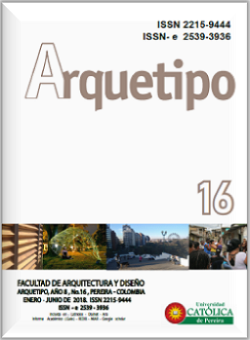The design as practice of E construction of meaning
Keywords:
Transversal competences, higher education, systems thinkingAbstract
The case of the subject of Context and Region is exposed: Introduction to Systems Thinking at the University of Ibagué (Colombia) is presented in this paper. Its purpose is focused on the development of competencies to systematically perceive and structure regional problematic situations and design alternatives to dissolve them. During the last year, a pedagogical strategy has been implemented that links the practice of design as a contextual excuse to situate the development of competences. The experience obtained has shown that the simulation of a practice such as design in subjects related to transversal competences, recognizes and recovers the idea of design in universities, not only as a disciplinary program but, above all, in its transdisciplinary sense.
References
Aldana, E. y Reyes, A. (2006). Disolver problemas. Bogotá: Universidad de los Andes.
Escobar, A. (2014). Sentipensar con la tierra. Medellín: Unaula.
Fleming, M. (2009). Perspectives on the use of competence statements in the tea¬ching of the English language. En: M. L. Pérez Cañado (ed.), English Language Teaching in the European Credit Transfer System. Facing the Challenge (pp. 75-92). Berlín: Peter Lang.
Fry, T. (1999). A new design philosophy: an introduction to defuturing. Sydney: UNSW Press.
Fry, T. (2012). Becoming human by design. London: Berg.
Fuenmayor, R.(2016). El cultivo de la verdad. Ibagué: Universidad de Ibagué
García, G. y Mirón, C. (2013). El enfoque de las capacidades y las competencias transversales en el EEES/The capabilities approach and transversal skills: the case of economic studies. Historia y comunicación social,18, 145-157.
González, T. (2005). El espacio europeo de educación superior: una nueva oportunidad para la universidad. En: P. Colás Bravo y J. de Pablos Pons (coords.), La Universidad en la Unión Europea. El Espacio Europeo de Educación Superior y su impacto en la docencia (pp. 27-55). Málaga: Ediciones Aljibe.
González, J. & Wagenaar, R. (Eds.). (2003). Tuning educational structures in Europe. Final report. Phase one. Bilbao: University of Deusto.
Gutiérrez, A. (2015). Resurgimientos: sures como diseños y diseños otros. Nómadas, (43), 113-129.
Herrera-González, J. D. (2010). La formación de docentes investigadores: el estatuto científico de la investigación pedagógica. Magis. Revista internacional de investigación en educación, 3(5), 53-62.
López-Garay, H.(1986). A Holistic Interpretive Concept of Systems Design. Tesis Doctoral, University of Pennsylvania, Philadelphia.
López-Garay, H., & Molano, D. L. (2017). Alter Design: A clearing where design is revealed as coming full circle to its forgotten origins and dissolved into nondesign. Design Philosophy Papers, 15(1), 63-67.
MacIntyre, A. (2013). After virtue. London: A&C Black. Martín-Barbero, J. (2003) Competencias transversales del sujeto que aprende. Revista Electrónica Sinéctica, 22, 30-36.
Universidad de Ibagué (2015). Documento de Registro Calificado del Programa de Diseño. Ibagué: Lopera-Molano, D.
Willis, A. (2006). Ontological designing. Design philosophy papers, 4(2), 69-92.

